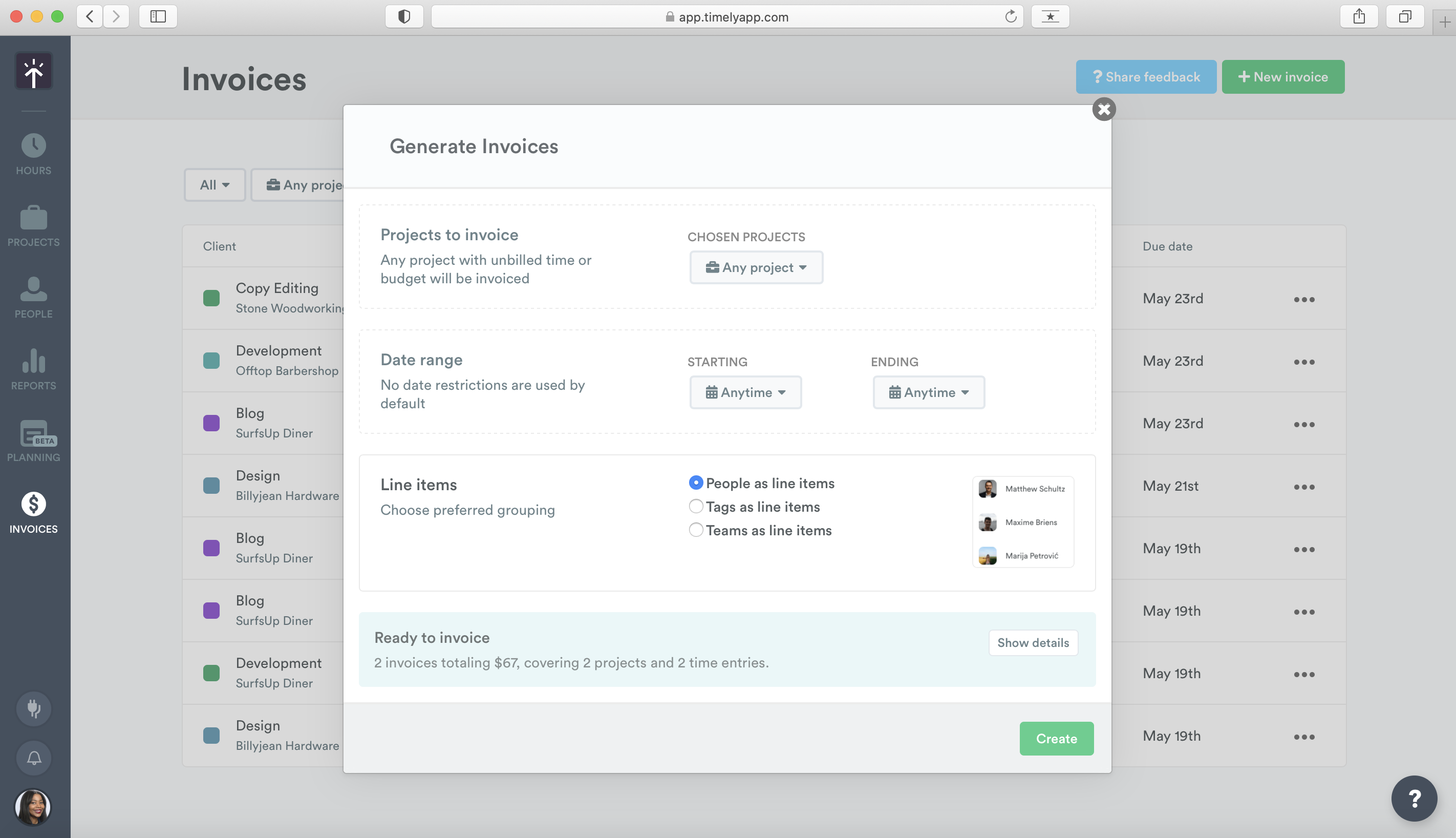The process of billing clients is an uninspiring, but necessary part of work. Whether you’re a freelancer, contractor, or business owner, it’s important you get paid on time – and correctly for all your work. Good invoice know-how and a solid billing procedure allows you to keep track of what’s settled, what’s overdue and what’s outstanding, which is essential for generating revenue. But how do you go about it?
The importance of proper invoicing
Professional invoicing makes payouts as convenient as possible. But it also allows you to keep a record of work performed, check your estimates against the hours you actually spend on a client or project, as well as understand your billable and non-billable hours.
Essentially, invoicing serves as an entity between two parties – one being a vendor, merchant or freelancer, and the other a client or customer. Invoices received from a supplier or vendor are recorded under accounts payable, while the vendor records an equal amount under their own company’s accounts receivable, which is extremely important for managing tax. But overall, proper invoicing helps both sides keep track of work, so it’s important you know how to do it properly.
How to make a professional invoice
There are three main ways to make an invoice, which vary in terms of accuracy, effort and sophistication. The best solution for you depends on what you prioritize most when invoicing.
1. Start from scratch
You might be tempted to use Excel or Google Sheets to embed or link out to a worksheet, but itemized calculations can be hard to keep track of if you’re not following them closely. Some find it easier to instead insert a table into a Microsoft Word document or Google Doc and perform calculations in there manually. You’ll need to start by making a manual note of hours and services performed, including a summary of activity for each entry. Starting from scratch, you'll also need to consider your invoice design, including font, logos, coloring and size. When creating your own manual invoices from scratch, always include:
- The name of your service, company or business
- Business contact number
- Invoice number
- Terms of payment
- Payment due date
- Bill to (payer contact information)
- Product or service details
- Sales tax
- Discount calculations (if applicable)
- Extra fees
- Notes

Once you’ve set up an invoice template of your own from scratch, it’s a good idea to save it somewhere accessible and just update the details for any future work performed. A few bits of invoicing best practice to keep in mind:
- Ensure each invoice has a unique invoice number
- Break your services down into individual line items, along with their associated charge
- Add any discounts, sales, fees or promotions towards the end of the invoice
- Calculate the total, followed by the grand total for the recipient to quickly understand what’s owed.
- Remember to include the client’s information – the name of their business, their address and any other details necessary (e.g. tax codes).
- Indicate your preferred method of payment, whether it’s by bank transfer or otherwise.
2. Use an invoice template
Creating an invoice from scratch can feel like more effort than it’s worth, so it's comforting to know that there are a range of basic invoice templates available in Microsoft Word that you can use, either within Word or pasted over to Google Docs. Here’s how to create an invoice template from Word:
- Select ‘invoice template’ under New in the File menu.
- Locate the Invoice icon in the dialogue box and select your preferred invoice template.
- Create a professional header.
- Replace the pre-filled information with your own (see the section above).
- Save your customized template for future use.

Just remember, using a template doesn’t make this method any more efficient or foolproof than making an invoice from scratch. You still have to manually log your hours and tweak information for every successive invoice – which introduces a huge margin for error. Aside from risking underselling your work, both these methods are extremely labour intensive; they introduce a low-value, repetitive task into your workflow which eats into the time you have available for your actual job.
3. Automate it
For those tired of the inaccuracy and inefficiency of traditional invoicing, automation is the obvious choice. Instead of managing spreadsheets and keeping a log of all your work, automatic time trackers and smart invoicing apps can now manage it all for you. They offer the highest level of invoicing accuracy with the lowest effort – meaning you’ll actually get paid for all your work, not just the bits you remember.
You just need to use time tracking that supports invoicing. Apps like Timely capture all the time you spend on different project and client work in the background for you, creating a completely objective record of your day. Unlike timer-based manual time trackers—which produce timesheets that are only ever 67% accurate—automatic time trackers help you invoice for all billable hours, including all the small billable tasks like email, meetings and travel that often fall through the cracks.

When you're ready to invoice, your automatic time tracking app will then draft accurate invoices in bulk for all unbilled work across projects and clients, and send them directly to your specialist accounting tool of choice for approval. Timely, for example, lets you draft and send multiple client invoices to QuickBooks Online in just a few clicks—there's no need to export and import reports between the tools for each individual invoice you want to send.

From QuickBooks Online, you can then add custom detaills—like PO numbers, VAT and discounts—before sending your invoice on to your client. Job done!


